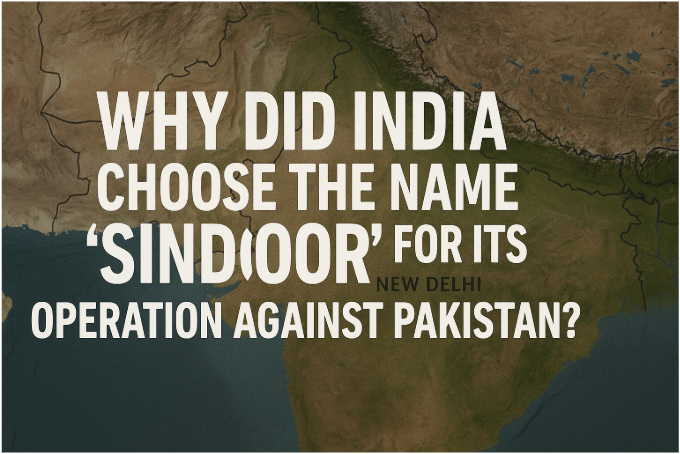
Why did India choose the name "Sindoor" for its operation against Pakistan?
On May 7, 2025, India launched a series of precision airstrikes against Pakistan and Pakistan-administered Kashmir, targeting nine sites allegedly linked to terrorist infrastructure. This military operation, codenamed "Operation Sindoor," was a direct response to the April 22 Pahalgam attack, where 26 Indian tourists, primarily Hindu men, were brutally killed. The operation's name, "Sindoor," holds deep cultural significance, symbolizing the profound loss experienced by the victims' families and conveying a powerful message of justice and resilience.
The Cultural Significance of "Sindoor"
In Hindu tradition, "sindoor" refers to the vermilion powder that married women apply along the parting of their hair, symbolizing marital status and the well-being of their husbands. The deliberate targeting of Hindu men in the Pahalgam attack left numerous women widowed, stripping them of this sacred symbol. By naming the retaliatory operation "Sindoor," India not only honored the memory of the victims but also underscored the nation's commitment to protecting its citizens and preserving its cultural values.
Strategic Execution of Operation Sindoor
Operation Sindoor was meticulously planned and executed, involving coordinated efforts from the Indian Army, Navy, and Air Force. The operation lasted approximately 23 minutes and utilized advanced weaponry, including Rafale jets equipped with SCALP missiles and AASM Hammer bombs. The targeted sites were believed to be associated with terrorist organizations such as Lashkar-e-Taiba and Jaish-e-Mohammed, which India holds responsible for the Pahalgam massacre.
Political and Public Reactions
The naming of the operation received widespread attention and praise. Prominent political figures, including Congress leader Shashi Tharoor, lauded the choice, highlighting its emotional resonance and the message it conveyed. Tharoor described "Operation Sindoor" as a "brilliant name" that sends a telling message, reflecting the nation's resolve and the symbolic weight of the operation.
Escalation of Tensions and International Response
Pakistan condemned the strikes, labeling them as an act of war and claiming civilian casualties, including women and children. In retaliation, Pakistan reported shooting down several Indian aircraft, though these claims have been contested. The situation has led to heightened tensions along the Line of Control, with both nations engaging in artillery exchanges. International leaders and organizations, including the United Nations, have called for restraint and urged both countries to engage in diplomatic dialogue to prevent further escalation.
Historical Context and Symbolism
India's choice of operation names often carries symbolic significance. Past operations, such as "Operation Vijay" and "Operation Meghdoot," have drawn from cultural and historical references to inspire national unity and convey strategic intent. "Operation Sindoor" continues this tradition, intertwining cultural symbolism with military strategy to communicate a message of justice and resilience.
Conclusion
"Operation Sindoor" stands as a poignant example of how cultural symbolism can be leveraged in military operations to convey deeper meanings and national sentiments. By choosing a name that resonates with the collective consciousness of the nation, India not only addressed the immediate security concerns but also paid tribute to the victims and their families. The operation underscores the complexities of geopolitical conflicts and the role of cultural identity in shaping national responses to acts of terrorism.
SEO Optimization Paragraph
This comprehensive analysis of "Operation Sindoor" delves into the cultural, strategic, and geopolitical dimensions of India's recent military response to the Pahalgam attack. By exploring the significance of the operation's name, the execution of the strikes, and the ensuing international reactions, this article provides valuable insights into India's defense strategies and the broader implications for regional stability. Keywords: Operation Sindoor, India-Pakistan conflict, Pahalgam attack, Indian military strategy, cultural symbolism in warfare, Lashkar-e-Taiba, Jaish-e-Mohammed, geopolitical tensions, Line of Control, international diplomacy.